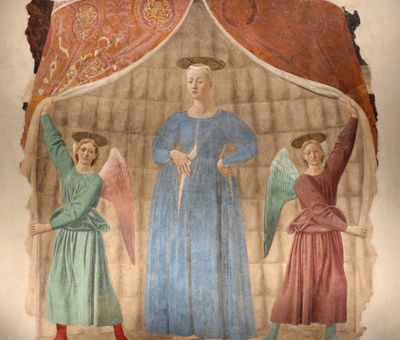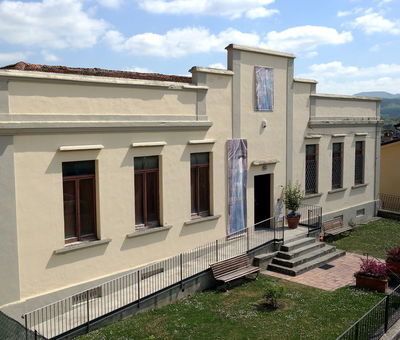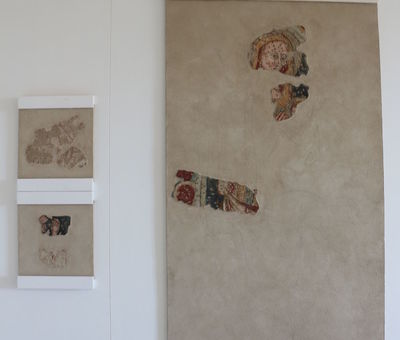An everlasting dialogue between the Madonna del Parto and mother
Her pale face is beautiful, her hair gathered into three blond braids held together with lace. She doesn’t seem like a noblewoman, but rather a commoner. She’s pregnant. Her blue dress is stretched taut across her stomach, while two angels on either side of her hold upon a curtain to show the Virgin Mary, announcing the birth of Jesus. This is Madonna del Parto, the masterpiece by Piero della Francesca that made Monterchi famous around the world. The fresco is perfectly beautiful, celebrates maternity.
Piero painted it between 1455 and 1465 in honour of his mother, Romana di Pierino da Monterchi, who was originally from this town. But this isn’t the only thing to tie this fresco to the area. It stands as an eternal dialogue between the Virgin Mary and mothers, surviving earthquakes and wars, devastating restorations and the ravages of time. Made for the Chapel of Santa Maria di Momentana, Madonna del Parto is today conserved in a dedicated museum housed in the town’s elementary school.
New mothers on pilgrimage, flowers and grain in hand
There are customs that are still carried on today. Some new mothers go on pilgrimage to the museum that houses Madonna del Parto. There are those who ask for protection and support at this delicate and painful time in their lives. In addition to being a masterpiece of Renaissance art, she has become, or always was, the protector of pregnant women, and was even dedicated a propitiatory fertility rite, as shown in the Tarjovskij’s film Toscana Nostalghia.
There are two historic episodes that attest to this deep bond between the Madonna and women. In 1944, a superintendent tried enclosing the fresco in order to protect it from a Nazi raid but, mistaken for an “enemy,” he was surrounded by women armed with pitchforks ready to defend the painting. In 1954, women led the protest against the proposal to loan to the fresco to Florence for an exhibition about the Renaissance. They won, and Madonna del Parto remained where it was.
A sisterhood with the Nursing Madonna
As early as the first half of the 1300s, Tuscany began to see realistic depictions of the pregnant Virgin Mary. The Valtiberina vaunts a rich iconography of Madonnas, and Marian worship is attested to even today in many chapels and paintings. Another new mother, the Nursing Madonna, was discovered when Piero della Francesca’s Madonna was being removed in 1911. The fresco was made in the Middle Ages and was covered by Piero. Only a few fragments have survived, which were reconstructed in what was likely their original dimensions. Whether or not there was a bond between the two Madonnas is a mystery, nor is it known if Piero was inspired by the earlier mother and child when he made his Madonna del Parto. What is definitely strong is the bond between the two mothers that have both survived the centuries.







